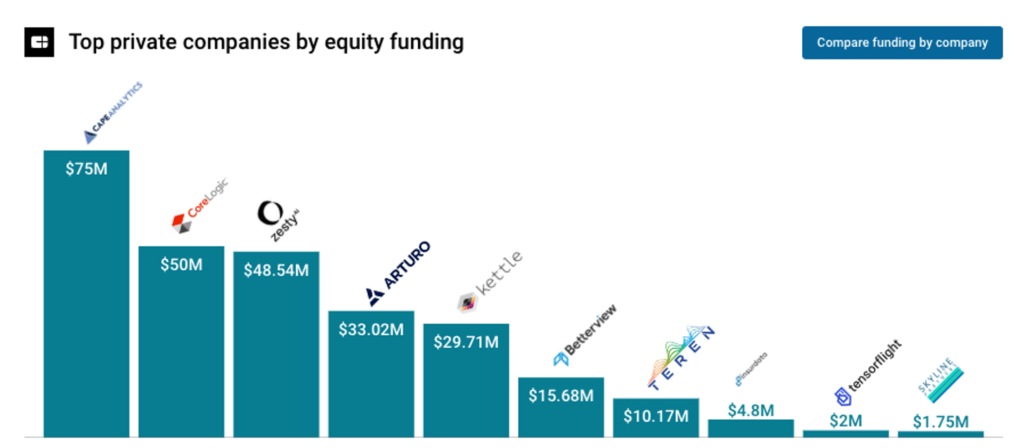Leading insurers are leaving markets due to increased wildfire risks. We analyze funding, headcount, and business relationship activity to understand how companies in the wildfire risk analytics space are attempting to solve this problem.
In recent weeks, State Farm and Allstate — the 2 largest US homeowners insurers — announced plans to stop selling home and commercial property insurance policies in California, citing increased wildfire risk as a primary reason.
While California has captured headlines, insurers are also quietly leaving other markets where wildfire risks are deemed too severe. For example, a recent study found 76% of insurers have decreased their exposure in Colorado due in part to increased wildfire risk.
Wildfires have been costly for insurers — causing $39B in insured losses between 2018 and 2022 — and rising temperatures and drier climates are increasing their severity and frequency. The unprecedented fires raging across Canada this week, which have put the country on pace for its worst wildfire season yet, further highlight the situation’s urgency.
In an attempt to help insurers navigate the issue, wildfire risk analytics companies are using satellite imagery, IoT devices, and AI to more precisely model wildfire risks.
In this brief, we use CB Insights data to assess the wildfire risk analytics market by looking at:
- Funding trends
- Headcount data
- Business relationships & client testimonials
Funding
Similar to the overall insurtech space, funding to wildfire risk analytics startups peaked in 2021 at $98M before falling to just over $40M in 2022. The space has yet to see any disclosed deals in 2023 so far.
Most wildfire risk analytics companies have raised relatively modest amounts of equity funding. The top-funded company here is CAPE Analytics, which has raised $75M in total funding and was most recently valued at $237M.
Dive deeper into CB Insights’ wildfire risk analytics market report here.
Want to see more research? Join a demo of the CB Insights platform.
If you’re already a customer, log in here.


